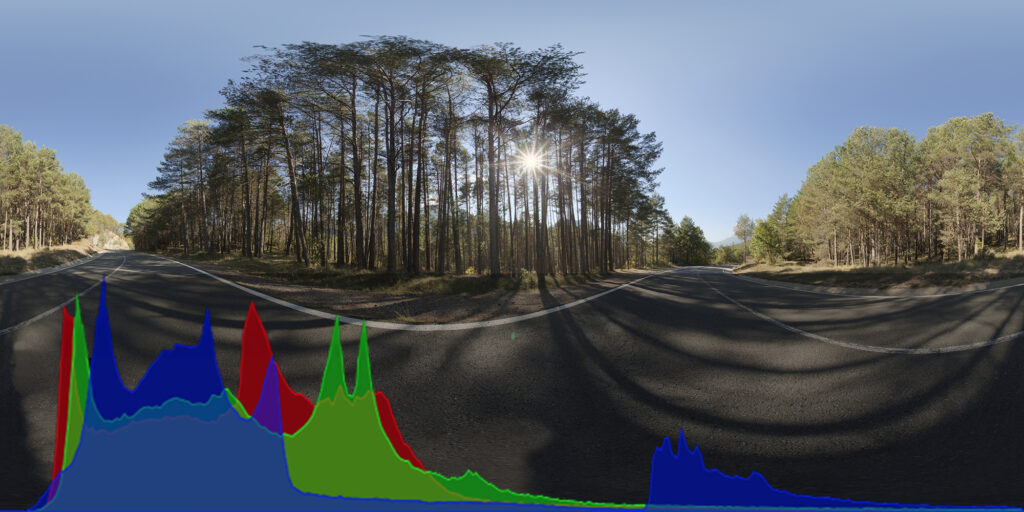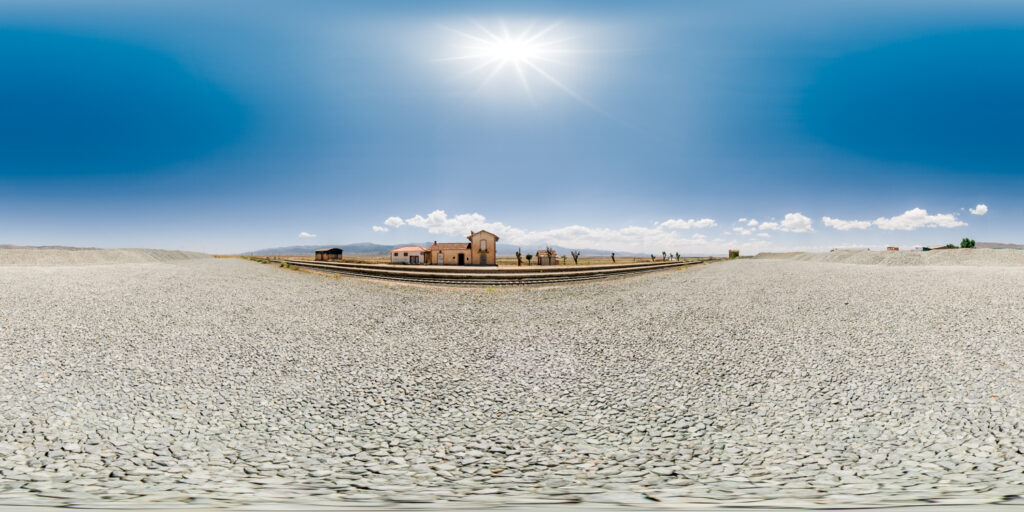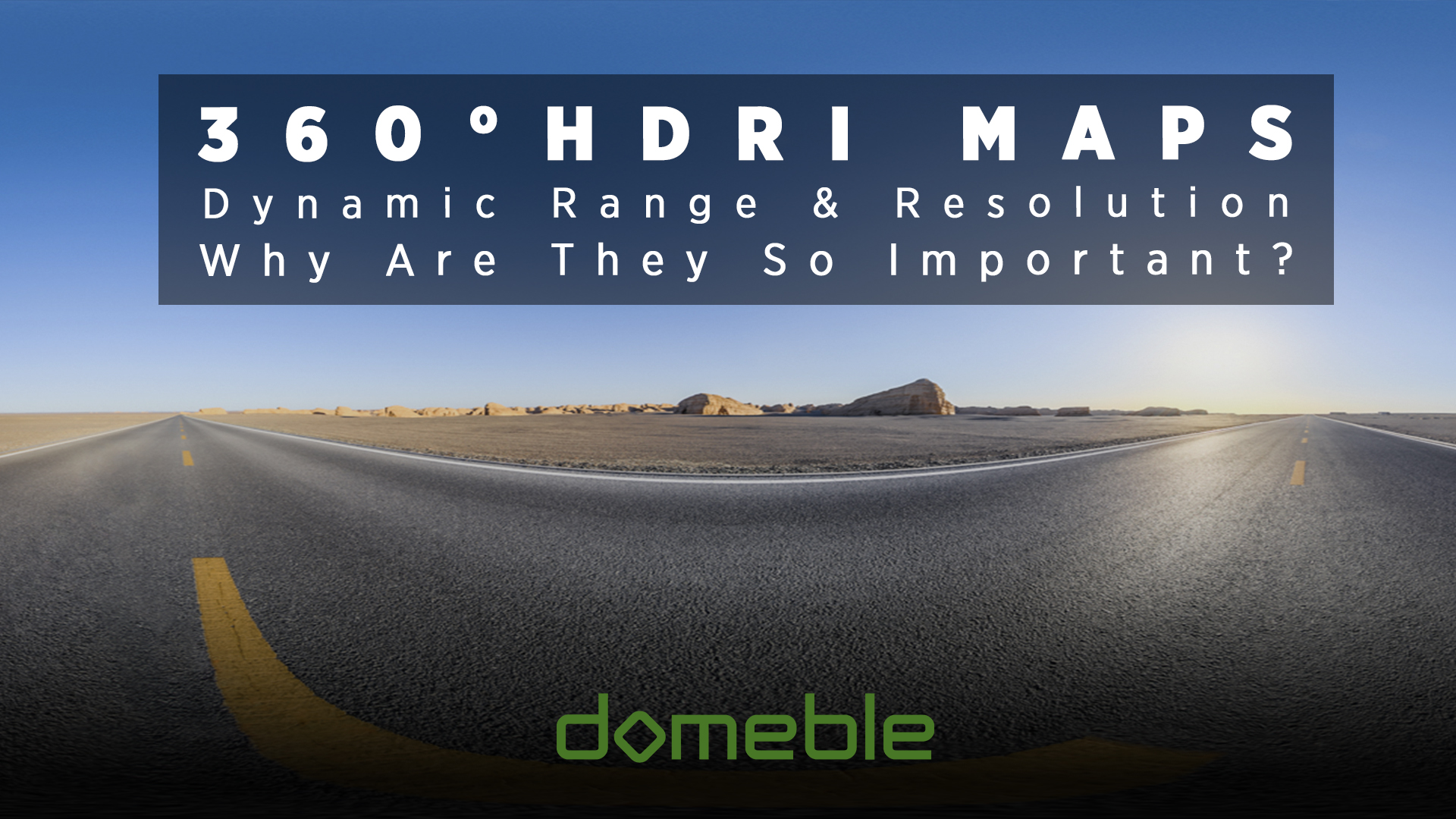Why are they so important?
Every great photo realistic render and engaging VR experience is built on a foundation of a good 360 HDRI map. So why are dynamic range and resolution so important?
Dynamic Range
In photography we refer to dynamic range as a High Dynamic Range Image, hence the acronym HDRI. So how it apply to our craft, and the difference between the capture of it, the use of it and the display of it.
Dynamic range is in fact the ratio between the maximum and minimum values of a physical measurement. Its definition depends on what the dynamic range refers to.
For a scene: Dynamic range is the ratio between the maximum and minimum luminance value in the scene, or in other words, the ratio between the brightest and darkest parts of the scene.
For a camera: Dynamic range is the ratio of saturation to noise. Specifically, the ratio of the intensity that just saturates the camera to the intensity that just lifts the camera response one standard deviation above camera noise.
For a display: Dynamic range is the ratio between the maximum and minimum intensities emitted from the screen.
Next we need to ask, how it is measured and against what parameters. For photographers and artists, and as the original photographers called themselves, “the keepers of light”, we can best understand it by luminance, in other words how bright or how dark it is.
The range of luminance human vision can handle is quite large. Luminance of starlight is around 0.001 cd/m2, (thats candelas per square meter), and a sunlit scene is around 100,000 cd/m2, which is a hundred millions times higher. The luminance of the sun itself is approximately 1,000,000,000 cd/m2.
The human eye can accommodate a dynamic range of approximately 10,000:1 in a single view.
To make it easier to understand how vast these differences are, we generally get scientific about it. To do this we use a logarithmic scale to plot the luminance. By way of a physical comparison we can say that a scene showing the interior of a room with a sunlit view outside the window, will have a dynamic range of approximately 100,000:1.

So What Is An HDR image
To understand this, we need to look at how it relates to our world of pixels and bit depth.
The Dynamic Range of real-world scenes can be quite high — ratios of 100,000:1 are common in the natural world. An HDR (High Dynamic Range) image stores pixel values that span the whole tonal range of real-world scenes.
Therefore, an HDR image is encoded in a format that allows the largest range of values. In other words, the floating-point values stored with 32 bits per colour channel.
Another characteristic of an HDR image is that it stores linear values. This means that the value of a pixel from an HDR image is proportional to the amount of light measured by the camera.
In this sense, HDR images are scene-referred, representing the original light values captured for the scene.
Whether an image may be considered High or Low Dynamic Range depends on several factors.
Most often, the distinction is made depending on the number of bits per colour channel that the digitised image can hold. However, the number of bits itself may be a misleading indication of the real dynamic range that the image reproduces – converting a Low Dynamic Range image to a higher bit depth does not change its dynamic range.
Bit Depth
Next we need to take a look at image bit depth, and how the bit depth varies from a low to high dynamic range.
- 8-bit images (i.e. 24 bits per pixel for a colour image) are considered Low Dynamic Range.
- 16-bit images (i.e. 48 bits per pixel for a color image) resulting from RAW conversion are still considered Low Dynamic Range. The range of values they can encode is significantly higher than for 8-bit images (65536 versus 256).
Note that converting a RAW file involves applying a tonal curve that compresses the dynamic range of the RAW data. This allows the converted image shows correctly on low dynamic range monitors.
The need to adapt the output image file to the dynamic range of the display is the factor that dictates how much the dynamic range is compressed, not the output bit-depth. By using 16 instead of 8 bits, you will gain precision but you will not gain dynamic range.
- 32-bit images (i.e. 96 bits per pixel for a color image) are considered High Dynamic Range.
Unlike 8- and 16-bit images which can take a finite number of values, 32-bit images are coded using floating point numbers, which means the values they can take is unlimited.
It is important to note, that storing an image in a 32-bit HDR format is a necessary condition for an HDR image but not a sufficient one. When an image comes from a single capture with a standard camera, it will remain a Low Dynamic Range image, regardless of the format used to store it.
There are various formats available to store HDR images. These typically are Radiance RGBE (.hdr) and OpenEXR (.exr) which is the preferred format that we adopt at Domeble. Whilst we work with both formats, we find a greater quality return with .exr .
So how can we count these “bits” and do we really need them all? We count the number of bits per colour channel, or the number of bits per pixel, and yes, we really do need them in order for rendering software to extract the maximum light information available, which in turn provides the best rendered output of your data sets. This is the reason why we need 32bit HDRI maps, as they have theoretically an infinite dynamic range. Using any other bit depth is limited and therefore wont render the same photo realism or lighting information needed for that perfect render.

Resolution
Some CG artists will argue that they just need a tiny resolution HDRI for their lighting and still extract maximum output. This can be argued and is true for non specific renders. However, in our world of lighting and reflections the more detailed our maps are the better. At Domeble we are now capturing 360 HDRI maps up to 40,000px in width, and whilst a bit overkill for rendering, they are the perfect assets for VR immersion providing crystal clear resolution quality for real world immersive experiences and analysing data sets inside an immersive environment.
We have a very active R&D programme here at Domeble and we believe in pushing the boundaries of the 360 HDRI world, and are proud of the content we produce. Should you have found this article of use, and you want to try out our 360 content, please click on this link https://www.domeble.com/free-samples/ and experience for yourself why dynamic range and resolution are indeed so important in a 360° HDRI map.










